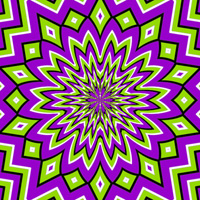|
The claim has been made that the experience facilitated by psychedelic (or mind-opening) drugs such as LSD, psilocybin, and mescaline can be similar or identical to the experience described by the mystics of all ages, cultures, and religions. This paper will attempt to examine and explain this possibility.
There is a long and continuing history of the religious use of plants which contain psychedelic substances. Scholars such as Osmond, Schultes, and Wasson have made valuable contributions to this intriguing field. In some instances, such natural products were ingested by a priest, shaman, or witch doctor to induce a trance for revelatory purposes; sometimes they were taken by groups of people who participated in sacred ceremonies. For example, the dried heads of the peyote cactus, whose chief active ingredient is mescaline, were used by the Aztecs at least as early as 300 B.C. and are currently being employed by over 50,000 Indians of the North American Native
Church as a vital part of their religious ceremonies. Both ololiuqui, a variety of morning glory seed, and certain kinds of Mexican mushrooms (called teonanacatl, “flesh of the gods”) were also used for divinatory and religious purposes by the Aztecs. These practices have continued to the present among remote Indian tribes in the mountains of Oaxaca Province in Mexico. Modern psychopharmacological research has shown the active chemicals to be psilocybin in the case of the mushrooms, and several compounds closely related to LSD in the case of ololiuqui. Amanita muscaria, the mushroom which has been used for unknown centuries by Siberian shamans to induce religious trances, does not contain psilocybin.

The most important psychologically active compound from this mushroom has not yet been isolated, but promising work is in progress. Other naturally occurring plants, which are used by various South American Indian tribes in a religious manner for prophecy, divination, clairvoyance, tribal initiation of male adolescents, or sacred feasts, are: cohoba snuff, made from the pulverized seeds of Piptadenia; the drink vinho de Jurumens, made from the seeds of Mimosa hostilis; and the drink caapi, made from Banisteriopsis. These last three products contain various indolic compounds which are all closely related to psilocybin, both structurally and in their psychic effects (e.g., bufotenine, dimethyltryptamine, and harmine, respectively). Both LSD and psilocybin contain the indolic ring, and mescaline may be metabolized to an indole in the body.
An Experimental Examination
of the Claim that Psychedelic Drug Experience
May Resemble Mystical Experience
Some of the researchers who have experimented with synthesized mescaline, LSD, or psilocybin have remarked upon the similarity between drug-induced and spontaneous mystical experiences because of the frequency with which some of their subjects have used mystical and religious language to describe their experiences. This data interested the author in a careful examination and evaluation of such claims. An empirical study, designed to investigate in a systematic and scientific way the similarities and differences between experiences described by mystics and those facilitated by psychedelic drugs, was undertaken [by the author in 1963], First, a phenomenological typology of the mystical state of consciousness was carefully defined, after a study of the writings of the mystics themselves and of scholars who have tried to characterize mystical experience. (For example,
William James was an invaluable pioneer in this area.) Then, some drug experiences were empirically studied, not by collecting such experiences wherever an interesting or striking one might have been found and analyzed after the fact, but by conducting a double-blind, controlled experiment with subjects whose religious background and experience, as well as personality, had been measured before their drug experiences.
The preparation of the subjects, the setting under which the drug was administered, and the collection of data about the experience were made as uniform as possible. The experimenter himself devised the experiment, collected the data, and evaluated the results without ever having had a personal experience with any of these drugs.
A nine-category typology of the mystical state of consciousness was defined as a basis for measurement of the phenomena of the psychedelic drug experiences. Among the numerous scholars of mysticism, the work of W. T. Stace*∗ was found to be the most helpful guide for the construction of this typology. His conclusion—that in the mystical experience there are certain fundamental characteristics which are universal and not restricted to any particular religion or culture (although particular cultural, historical, or religious conditions may influence both the interpretation and description of these basic phenomena)—was taken as a presupposition.
Whether or not the mystical experience is “religious” depends upon one’s definition of religion and was not the problem investigated. Our typology defined the universal phenomena of the mystical experience, whether considered “religious” or not.
“Drugs and Mysticism” by Walter N. Pahnke is an extract from The Highest State of Consciousness edited by John W. White, published by White Crow Books and available from Amazon and other bookstores.
Paperback Kindle
www.whitecrowbooks.com/the highest state of consciousness
|